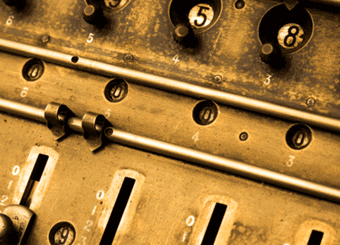What can procurement do with Blockchain?
Staff fraud and corruption affects organizations all over the world. According to the Association of Certified Fraud Examiners (ACFE), 5% of yearly revenue generated by global businesses is lost due to fraud; North American companies in particular lost an average of $120,000 in 2020 alone. Small businesses appear to be disproportionately affected by fraud, with companies featuring less than 100 employees indicating that they lose up to $200,000 per year (versus larger companies reporting an average yearly loss of $104,000). Many businesses protect their systems from hackers and viruses, but what best practices should organizations use to protect themselves from employees with malicious and dishonest intentions, and how can procurement play its part?
ACFE’s statistics indicate that nearly one-third of fraud is the result of a lack of internal controls. But even with the most stringent checks and measures in place, every financial transaction still relies on an element of trust at some stage from the individuals involved; there is no such thing as a system or process that guarantees 100% authenticity on every company transaction.
Blockchain is currently being touted as a fraud prevention solution. Although it’s one of the latest tech buzzwords, in reality few companies have taken full advantage of all of its potential anti-fraud applications, beyond preventing double counting within the Bitcoin digital payment system. This is certainly the case in procurement, where both upstream and downstream procurement technologies have yet to incorporate Blockchain into their mainstream offerings to reduce fraud risk.
How does Blockchain in procurement work?
To understand how Blockchain could be used in eProcurement systems is to understand how it works. Put simply, Blockchain is a technology that enables data to be distributed to known members within an agreed network. Each item of data ( documents, information records, transaction receipts, and so on) is shared and stored with every member in the network who can accept its authenticity.
Once an item has been created, it can’t be copied or changed and it becomes a data ‘block’ that is added sequentially into the Blockchain database. Any subsequent changes to the item would require a new item (block) to be issued to the same network members, again all of whom would be required to validate it. Once validated, the new block is again added to the end of the Blockchain line. The goal of this process is 100% data transparency and protection against unauthorized changes.
What does Blockchain mean for procurement technology?
Applying this distributed sharing technology concept to procurement can provide big benefits for your company, particularly with regard to invoice management. Using Blockchain would guarantee that an invoice can’t be changed unknowingly between the moment a supplier submits it and the time a buyer processes it. Any invoice transaction would have to be checked and approved by all participants, and changes to the invoice by any individual, for whatever reason, would need to be re-submitted (as a new block - in this case an invoice) and validated by all users within the network.
There are other applications where Blockchain could help protect against unauthorized access or hidden changes to information - in areas of contract management and supplier information management for example.
As businesses expand into new countries around the world, their growing supplier network and payment operations will inevitably put them at greater risk of fraudulent activity. Incorporating Blockchain as part of your best practices can help here too, especially if you are operating in territories more culturally prone to fraud.
There’s another upside to using Blockchain in procurement as well. Its decentralized approach means that malicious cyberattacks and other external security threats will be less likely, given that there is no centralized server location to aim for. With data residing on multiple decentralized systems, the process is inherently more robust.
A new way to tackle an old problem
The Internet of Things has given businesses greater access, speed and connectivity with data and information, but with it has come a greater risk of fraudulent activity. Blockchain provides a fascinating new way to tackle the problem, and we’re starting to see procurement leaders and the vendor community discovering the greater transactional and operational security it provides.






